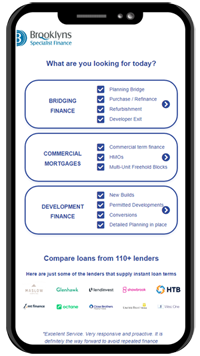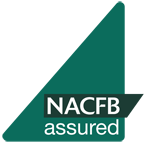Understanding Property Development Finance
Whether you’re transforming an old factory or building new homes from the ground up, property development finance can help turn your vision into reality. But how do these loans work, and what is the best option for your project? Here's everything you need to know about development finance and how much you can borrow.
What is Property Development Finance?
Property development finance is a loan designed specifically to cover the costs of land purchases and construction. It’s commonly used for a range of projects, such as:
- Multi-unit residential developments
- New build construction
- Commercial and semi-commercial property projects
- Student accommodation
- Single-property builds and large-scale developments
Even if your project is already in progress, development finance can provide the additional funding needed to continue or complete the work.
How Does Development Finance Work?
To secure development finance, you’ll need to find a lender that aligns with your development plans. The lender will assess the Gross Development Value (GDV)—the estimated value of the property once it's complete. They will also review your experience as a developer to determine whether you can successfully deliver the project.
Typically, development finance is released in stages. Funds are provided in increments as you reach specific milestones in the project. At each stage, you’ll need to demonstrate progress to unlock the next round of funding, ensuring your project remains on track.
How Much Can You Borrow?
The amount you can borrow is generally based on the GDV of your completed project. Lenders typically offer 60-70% of the GDV and may cover up to 100% of the build costs, especially if the loan total remains below 60% of the GDV.
Maximum Loan-to-Value (LTV) and Deposit Requirements
When financing both the purchase and development, most lenders provide 60-75% of the purchase price, referred to as the Loan-to-Value (LTV). They may fund 100% of the development costs, with funds released in stages as the project progresses.
In some cases, you may be able to secure a loan covering the full purchase cost of the site, but additional security—such as equity in other properties—may be required. Some lenders may also negotiate a profit-share agreement for these types of loans.
What Are the Requirements for Development Finance?
Since development finance is assessed on a case-by-case basis, there is no universal set of criteria. However, there are a few common factors most lenders will consider:
- Clear Exit Strategy: Lenders will want to know how you plan to repay the loan, typically through the sale of the property or refinancing. A solid exit strategy ensures the lender you can cover the loan once the project is complete.
- Credit History: While you don’t need perfect credit, having a clean credit history can strengthen your application. Poor credit may affect your chances if it impacts your exit strategy, but many lenders are flexible.
- Experience in Property Development: Experience isn’t always required, but it’s beneficial. If you have a proven track record, lenders are more likely to trust your ability to deliver. That said, there are lenders who cater to first-time developers.
- Deposit or Security: Lenders typically require a 70-75% Loan-to-Value ratio for the purchase price, so you’ll need to cover the remaining 25-30%. Offering a higher deposit or additional security, such as equity in another property, can lower the risk and improve loan terms.
Lenders will also assess the complexity of your project and the expertise of your team, ensuring the development is realistic and feasible.
Pros and Cons of Development Finance
Development finance can be a powerful tool for developers, but it’s important to understand both its advantages and disadvantages.
Benefits:
- Quick Access to Funds: Development finance provides a reliable source of capital, with funds released in stages to ensure continuous cash flow.
- Take on Larger Projects: This type of finance allows you to handle bigger projects than you could with personal funds alone, leading to potentially higher returns.
- Manage Multiple Projects: By reducing the amount of personal capital tied up in a single project, development finance enables you to take on multiple developments simultaneously.
Drawbacks:
- Higher Borrowing Costs: Interest rates on development finance are typically higher than standard mortgages, making it more expensive. It's best suited for short-term use, with the option to refinance into a mortgage after project completion.
- Complexity in Comparing Rates: With many options on the market, comparing interest rates and fees can be complicated. Lenders also require extensive documentation to assess risk, which can slow down the approval process.
Conclusion
Development finance offers the flexibility and resources to help you grow your property portfolio, whether you’re taking on large-scale projects or multiple developments. However, it’s important to carefully evaluate the costs and requirements before committing
With the vast ways of raising finance for developments in the market, and no two project will be the same, call our experts who can ensure the right type of funding is made available to you.
Compare Loans
Start your search with access to 100+ lenders for bridging loans, development financed & commercial mortgages.

Compare Loans
Start your search with access to 100+ lenders for bridging loans, development financed & commercial mortgages.
Compare Loans Here


--600.jpg)

